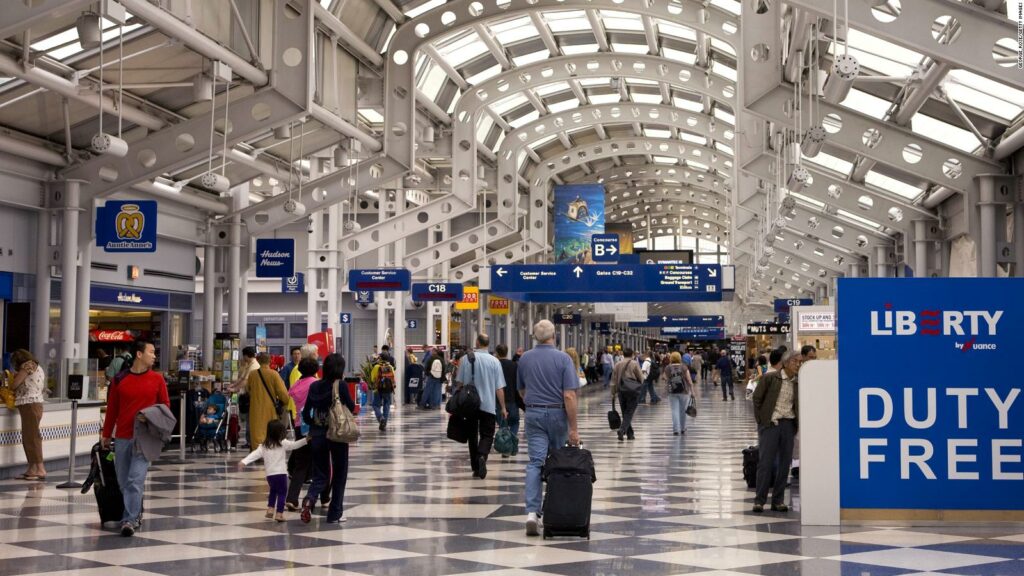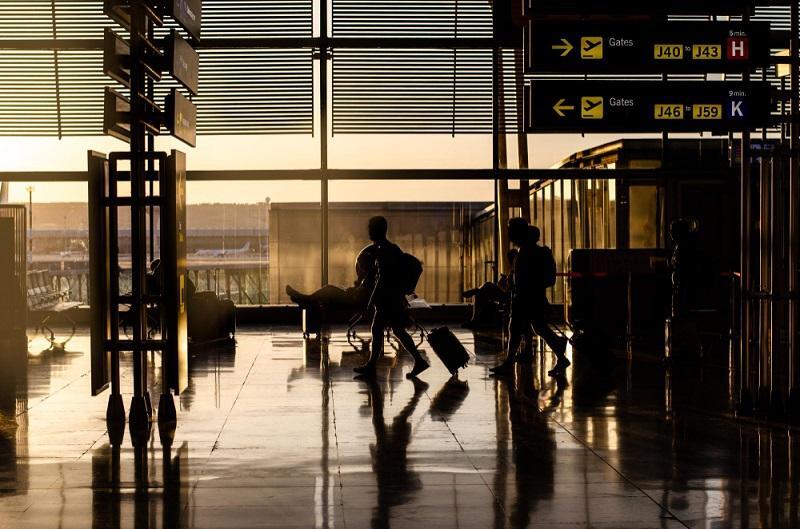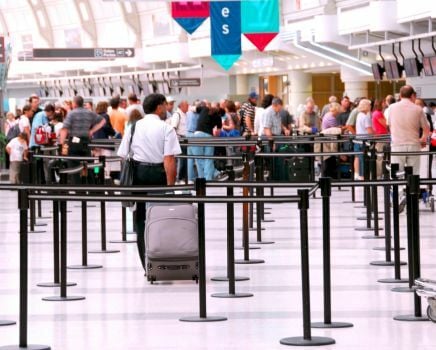Air travel has become an integral part of modern life, with millions flying daily. However, the experience at airports can often be stressful and challenging.
Improving the passenger experience is crucial for ensuring a smooth and pleasant journey. Not only that, but it is also about safety and satisfaction.
A recent survey revealed that 62% of travelers consider the airport experience a significant factor in their overall travel satisfaction.
This article will explore the importance of improving the airport passenger experience, discuss current challenges travelers face, and present practical methods to address these issues.
Strategies to Improve Airport Passenger Experience
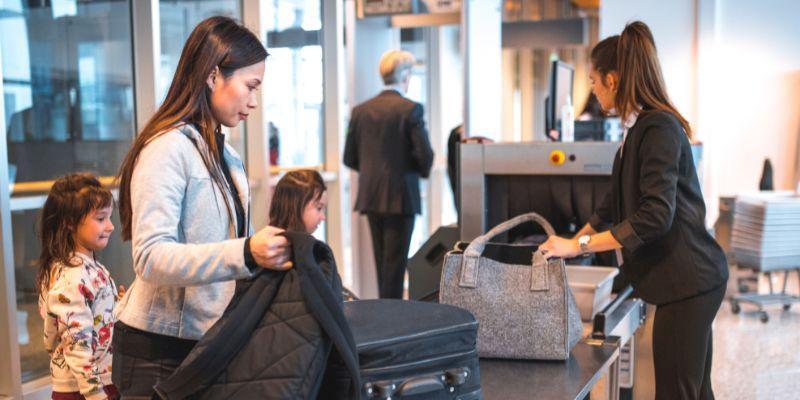
Improving the airport passenger experience involves implementing strategies to address common pain points and boost overall satisfaction. Here are some effective methods to achieve this:
- Streamlining Check-In and Security Procedures
- Enhancing Communication and Information Accessibility
- Improving Airport Infrastructure and Amenities
- Elevating Customer Service
- Leverage the Feedback Collection
- Enhancing Accessibility and Inclusivity
- Utilizing Technology for Seamless Travel
- Self-Service Kiosks
- Ticket Dispensing
- Optimizing Queue Management Systems
- Promoting Health and Safety
- Sustainability Initiatives
1. Streamlining Check-In and Security Procedures
Streamlining check-in and security procedures reduces wait times and alleviates passenger stress. Airports can adopt self-service check-in kiosks and online check-in options to minimize queues at counters.
Advanced biometric technologies, such as facial recognition and fingerprint scanning, can expedite security screening. Implementing automated screening lanes and pre-check programs also helps speed up security checks.
Clear and concise signage and staff assistance are crucial for guiding passengers smoothly through check-in and security. By focusing on these areas, airports can significantly boost the efficiency and convenience of their operations, leading to a more pleasant experience for travelers.
2. Enhancing Communication and Information Accessibility
Enhancing communication and information accessibility is vital for keeping passengers informed and reducing confusion. Airports should utilize digital displays and multilingual signage to provide real-time updates on flight status, gate changes, and other important information.
Mobile apps can offer personalized notifications and wayfinding assistance, making it easier for travelers to navigate the airport.
Providing free Wi-Fi and charging stations ensures passengers can stay connected, Access information as needed, and have a smooth passenger experience at the airport.
Virtual assistants and chatbots can also answer common questions and provide instant support. By improving the flow of information and making it readily accessible, airports can help passengers feel more in control and less stressed during their journey.
3. Improving Airport Infrastructure and Amenities
Improving airport infrastructure and amenities is crucial for creating a comfortable and enjoyable environment for passengers. Airports should invest in modern and spacious terminals with ample seating areas, charging stations, and relaxing lounges.
Various dining and shopping options cater to diverse tastes and needs, enhancing the overall experience. Clean and well-maintained restrooms, as well as accessible facilities such as ramps and elevators, ensure all passengers, including those with disabilities, are accommodated.
Implementing green spaces and art installations can create a more pleasant atmosphere. By focusing on these improvements, airports can significantly enhance the comfort and satisfaction of their passengers.
4. Elevating Customer Service

Elevating customer service is critical to a positive airport experience. Friendly, helpful, and knowledgeable staff can make a huge difference. Training staff to be welcoming and ready to assist passengers ensures that travelers feel valued and supported.
Offering quick and practical solutions to issues can significantly improve the overall experience. Airports should also consider providing customer service desks and information points throughout the terminal, where passengers can quickly seek help.
By focusing on excellent customer service, airports can create a more pleasant and stress-free environment for travelers.
5. Leverage the Feedback Collection
Leveraging feedback collection is essential for continuous improvement. Airports should actively seek passenger feedback through surveys, suggestion boxes, and online reviews.
By listening to travelers’ experiences and concerns, airports can identify areas for improvement and implement changes accordingly. Regularly analyzing feedback helps understand passenger needs and preferences, allowing airports to make data-driven decisions.
Encouraging passengers to share their thoughts and making visible efforts to address their feedback shows that the airport values their opinions and is committed to enhancing their airport experience.
6. Enhancing Accessibility and Inclusivity
Enhancing accessibility and inclusivity ensures that all passengers, including those with disabilities, can easily navigate the airport.
Airports should provide ramps, elevators, and designated assistance services to support passengers with mobility challenges. Clear and multilingual signage helps non-native speakers find their way.
Additionally, quiet areas and sensory rooms can assist passengers with sensory sensitivities. By creating an inclusive environment, airports can ensure every traveler feels welcome and comfortable.
This commitment to accessibility and inclusivity improves the airport passenger experience and demonstrates the airport’s dedication to serving all its visitors.
7. Utilizing Technology for Seamless Travel
Utilizing technology for smooth travel is critical for modernizing the airport experience. Airports can implement mobile apps that provide real-time updates on flight status, gate changes, and other essential information.
These apps can also offer features such as mobile boarding passes and wayfinding assistance, helping passengers navigate the airport more quickly. Virtual assistants and chatbots can provide instant support, answer common questions, and provide guidance.
Additionally, automated luggage tracking systems can inform passengers about the status and location of their checked bags. Using advanced technologies, airports can create a more connected and efficient environment, ensuring a smoother travel experience for passengers.
8. Self-Service Kiosks
Self-service kiosks are an excellent way to reduce congestion and improve airport efficiency. These kiosks allow passengers to check in, print boarding passes, and tag their own luggage without needing assistance from airport staff.
Airports can speed up the check-in process and reduce long lines at the counters by placing these kiosks in easily accessible areas. Self-service kiosks also authorize passengers by giving them control over their travel process, making their experience more convenient and stress-free.
Additionally, these kiosks can provide multi-language support and customizable interfaces to cater to international travelers. This increases passenger satisfaction and frees airport staff to handle more complex inquiries and assistance needs.
9. Ticket Dispensing
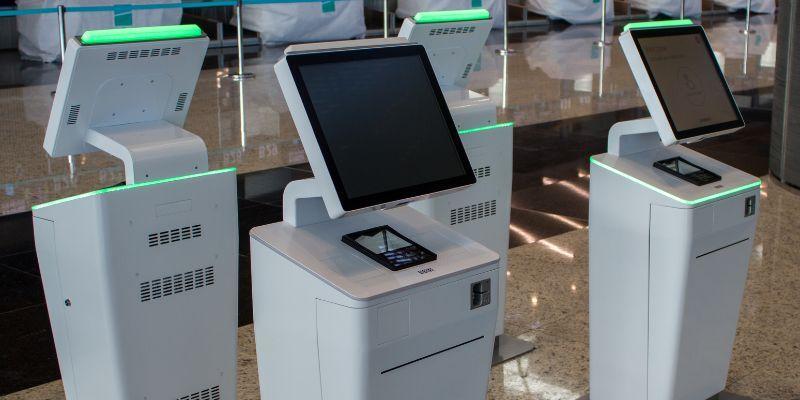
Ticket dispensing machines can further enhance the convenience of air travel. These machines allow passengers to purchase or collect their tickets quickly, avoiding long waits at ticket counters.
Placing ticket dispensing machines throughout the airport allows passengers to easily access their tickets at any point in their journey.
This speeds up the process and reduces airport staff’s workload, allowing them to focus on providing assistance where it’s most needed.
Furthermore, integrating these machines with loyalty programs and discount offers can improve the airport passenger experience by providing additional benefits and savings.
Overall, ticket dispensing machines provide a more efficient and pleasant travel experience, ensuring passengers can proceed through the airport with minimal delays.
10. Optimizing Queue Management Systems
Optimizing queue management systems is crucial for reducing wait times and improving the overall flow of passengers through the airport. By implementing digital queue management systems, airports can provide real-time updates to passengers about waiting times and queue lengths.
These systems can use innovative technology to predict peak times and dynamically allocate resources, such as opening additional security lanes or check-in counters when needed.
Implementing virtual queues, where passengers receive notifications when it’s their turn, can reduce physical crowding and improve the airport passenger experience.
Clear signage and information displays can help passengers understand the process and where to go, reducing confusion and anxiety.
11. Promoting Health and Safety
Promoting health and safety is more important than ever in today’s travel environment. Airports must implement stringent cleaning protocols and regularly sanitize high-touch areas.
Providing hand sanitizing stations throughout the airport and encouraging their use can help reduce the spread of germs. Touchless technology, such as automated doors, touch-free check-in kiosks, and mobile boarding passes, can minimize physical contact and boost passenger safety.
Clear communication about health and safety measures, including social distancing guidelines and mask policies, is also essential. Airports should use digital displays and public announcements to keep passengers informed.
Airports can help passengers feel more secure and comfortable by prioritizing health and safety, which is crucial for maintaining traveler confidence in air travel.
12. Sustainability Initiatives
Sustainability initiatives are becoming increasingly crucial as travelers become more conscious of their environmental impact. Airports can implement various measures to promote sustainability and reduce their carbon footprint.
Energy-efficient lighting and heating systems, as well as the use of renewable energy sources, can significantly reduce energy consumption. Implementing comprehensive recycling programs and reducing single-use plastics in terminals are also effective strategies.
Airports can also promote sustainable transportation options by providing electric vehicle charging stations and encouraging the use of public transport.
Green building practices, such as using sustainable materials and designing terminals to maximize natural light, can further enhance sustainability efforts.
By committing to these initiatives, airports help protect the environment and appeal to eco-conscious travelers.
Demonstrating a commitment to sustainability can improve an airport’s reputation, boost passenger experience, and attract passengers who prioritize environmental responsibility in their travel choices.
How To Improve Passenger Experience – FAQS
How can I provide feedback about my airport experience?
You can provide feedback by filling out a survey on the airport’s official website or through feedback kiosks throughout the terminal. Many airports also accept feedback via their mobile app or social media channels.
How can I find assistance if I have special needs or disabilities?
If you have special needs or disabilities, look for designated assistance counters or contact the airport staff via help phones throughout the terminal. Additionally, you can request assistance when booking your flight or check-in at the airport.
Conclusion
Improving the airport passenger experience requires a comprehensive approach that addresses various pain points and leverages technology and innovation.
By streamlining check-in and security procedures, improving communication, improving infrastructure and amenities, and ensuring accessibility and inclusivity, airports can create a more enjoyable and stress-free environment for travelers.
Advanced technologies like mobile apps, self-service kiosks, and ticket dispensing machines can significantly improve efficiency and convenience.
Ultimately, these efforts lead to higher passenger satisfaction, increased loyalty, and a better overall reputation for airports.
As airports evolve and adopt these strategies, the journey from check-in to boarding will become smoother and more pleasant for everyone.
BOOK A FREE DEMO
